Filter by

Advanced DSP Techniques for High-Capacity and Energy-Efficient Optical Fiber …
The rapid proliferation of the Internet has been driving communication networks closer and closer to their limits, while available bandwidth is disappearing due to an ever-increasing network load. Over the past decade, optical fiber communication technology has increased per fiber data rate from 10 Tb/s to exceeding 10 Pb/s. The major explosion came after the maturity of coherent detection and …
- Edition
- -
- ISBN/ISSN
- 978-3-03921-793-9
- Collation
- -
- Series Title
- -
- Call Number
- 624 ADV

Clean Energy and Fuel (Hydrogen) Storage
Clean energy and fuel storage are often required for both stationary and automotive applications. Some of these clean energy and fuel storage technologies currently under extensive research and development include hydrogen storage, direct electric storage, mechanical energy storage, solar–thermal energy storage, electrochemical (batteries and supercapacitors), and thermochemical storage. The …
- Edition
- -
- ISBN/ISSN
- 978-3-03921-631-4
- Collation
- -
- Series Title
- -
- Call Number
- 624 ELI c
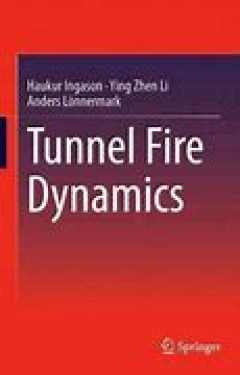
Tunnel Fire Dynamics
This book covers a wide range of issues in fire safety engineering in tunnels, describes the phenomena related to tunnel fire dynamics, presents state-of-the-art research, and gives detailed solutions to these major issues. Examples for calculations are provided. The aim is to significantly improve the understanding of fire safety engineering in tunnels. Chapters on fuel and ventilation control…
- Edition
- -
- ISBN/ISSN
- 978-1-4939-2199-7
- Collation
- 111 b/w illustrations, 21 illustrations in colour
- Series Title
- -
- Call Number
- -
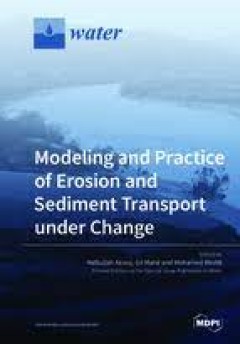
Modeling and Practice of Erosion and Sediment Transport under Change
Climate and anthropogenic changes impact the conditions of erosion and sediment transport in rivers. Rainfall variability and, in many places, the increase of rainfall intensity have a direct impact on rainfall erosivity. Increasing changes in demography have led to the acceleration of land cover changes in natural areas, as well as in cultivated areas, and, sometimes, in degraded areas and des…
- Edition
- -
- ISBN/ISSN
- 978-3-03921-432-7
- Collation
- -
- Series Title
- -
- Call Number
- 624 MOD
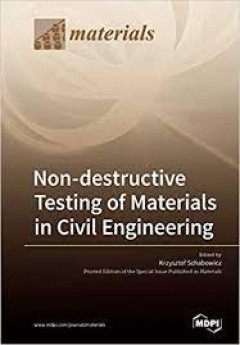
Non-destructive Testing of Materials in Civil Engineering
This book was proposed and organized as a means to present recent developments in the field of nondestructive testing of materials in civil engineering. For this reason, the articles highlighted in this editorial relate to different aspects of nondestructive testing of different materials in civil engineering—from building materials to building structures. The current trend in the development…
- Edition
- -
- ISBN/ISSN
- 978-3-03921-691-8
- Collation
- -
- Series Title
- -
- Call Number
- 624 NON
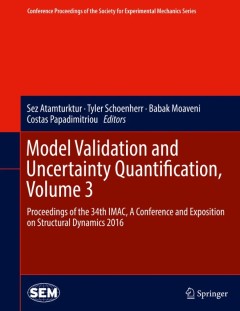
Model Validation and Uncertainty Quantification, Volume 3: Proceedings of the…
Model Validation and Uncertainty Quantifi cation, Volume 3. Proceedings of the 34th IMAC, A Conference and Exposition on Dynamics of Multiphysical Systems: From Active Materials to Vibroacoustics, 2016, the third volume of ten from the Conference brings together contributions to this important area of research and engineering. Th e collection presents early findings and case studies on fundamen…
- Edition
- 1
- ISBN/ISSN
- 978-3-319-29753-8
- Collation
- VIII, 379; 43 b/w illustrations, 215 illustrations in colour
- Series Title
- Conference Proceedings of the Society for Experimental Mechanics Series
- Call Number
- -
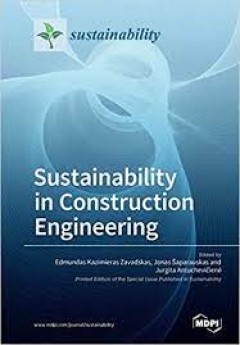
Sustainability in Construction Engineering
The concept of sustainability has been expanding to all areas of economic activity, including construction. The Special Issue “Sustainability in Construction Engineering” provided a possibility for researchers to disseminate their new ideas and findings related to sustainable decisions in construction engineering as a complex discipline that involves designing, planning, construction and ma…
- Edition
- -
- ISBN/ISSN
- 978-3-03897-167-2
- Collation
- -
- Series Title
- -
- Call Number
- 624 SUS
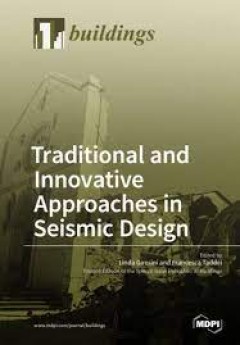
Traditional and Innovative Approaches in Seismic Design
This special issue collects selected papers about a wide range of innovative applications in earthquake engineering. These studies were presented during the 2nd Edition of the International Workshop “Traditional and Innovative Approaches in Seismic Engineering”, held in Pisa in March 2017. The topics refer to the investigation of traditional and innovative materials for earthquake engineeri…
- Edition
- -
- ISBN/ISSN
- 978-3-03842-748-3
- Collation
- -
- Series Title
- -
- Call Number
- 624 TRA
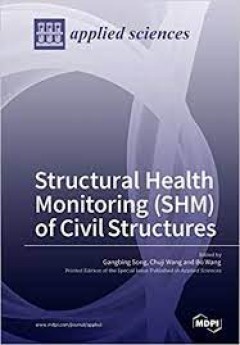
Structural Health Monitoring (SHM) of Civil Structures
At the current time of writing, the American Society of Civil Engineers (ASCE) has awarded American infrastructure a grade of D+, meaning poor and at risk. Part of the reason for the low grade is due to the rapid deterioration of structural integrity and the inability of most places to safely meet future demands. Deficiencies in these areas may be remediated by advancements in structural health…
- Edition
- 1
- ISBN/ISSN
- -
- Collation
- -
- Series Title
- -
- Call Number
- 624
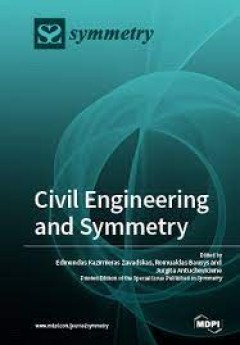
Civil Engineering and Symmetry
A topic of utmost importance in civil engineering is finding optimal solutions throughout the life cycle of buildings and infrastructural objects, including their design, manufacturing, use, and maintenance. Operational research, management science, and optimization methods provide a consistent and applicable groundwork for engineering decision-making. These topics have received the interest of…
- Edition
- 1
- ISBN/ISSN
- -
- Collation
- -
- Series Title
- -
- Call Number
- 624
 Computer Science, Information & General Works
Computer Science, Information & General Works  Philosophy & Psychology
Philosophy & Psychology  Religion
Religion  Social Sciences
Social Sciences  Language
Language  Pure Science
Pure Science  Applied Sciences
Applied Sciences  Art & Recreation
Art & Recreation  Literature
Literature  History & Geography
History & Geography